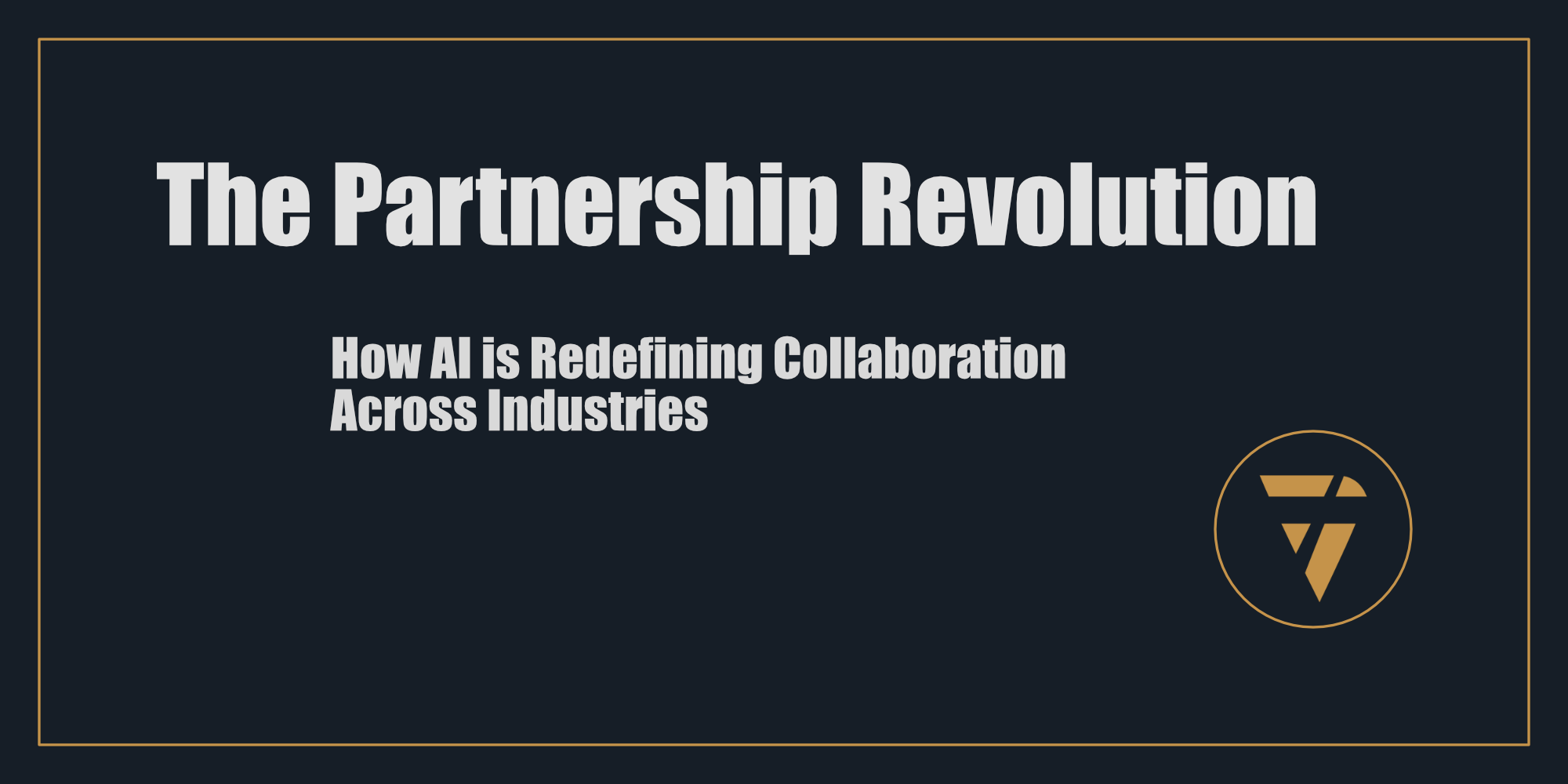The Partnership Revolution
How AI is Redefining Collaboration Across Industries

What if the future of your business depends on who you partner with—and how well you embrace AI together?
In the age of artificial intelligence, collaboration has taken on a new meaning. For decades, partnerships were built on tangible, human synergies—shared markets, complementary skills, and the universal handshake. But AI is reshaping these dynamics, introducing a new layer of complexity and opportunity. It doesn’t just improve what you can do; it transforms how you work with others.
Let me ask you this: When was the last time your partnerships were truly transformative? If your answer points to incremental gains rather than exponential leaps, this post is for you.
Why AI Changes the Rules
AI is no longer just a tool for automating tasks; it’s a strategic enabler that can amplify the value of every partnership. It allows businesses to:
- Predict trends before they happen: AI-powered analytics can anticipate customer behaviour, supply chain disruptions, and market shifts with a level of precision humans can’t match.
- Optimize operations in real time: From dynamic pricing to workflow automation, AI drives efficiencies that were previously unimaginable.
- Create entirely new solutions: When two companies pool their AI capabilities, they can innovate faster and more effectively than either could alone.
However, these capabilities come with challenges. How do you build trust when one partner controls a black-box algorithm? How do you share sensitive data without risking security breaches? How do you ensure that AI-powered decisions remain ethical and transparent?
AI doesn’t just make partnerships better—it makes them more complex. That complexity requires a fresh approach to collaboration.
The Building Blocks of AI-Enhanced Partnerships
1. Choose Partners with Complementary Strengths
AI thrives on data, and the best partnerships often combine diverse datasets to unlock new insights. Look for partners who can fill gaps in your capabilities, whether through proprietary data, advanced algorithms, or niche expertise.
Pro Tip: Use a framework like Proconsul’s Ideal Client Avatar (ICA) to ensure your partner aligns not only with your goals but also with your values. Shared purpose is essential when AI introduces uncertainty.
2. Design Transparent Collaboration Models
AI thrives on trust—both between humans and algorithms, and between organizations. Build collaboration agreements that clearly define:
- Data ownership and access rights.
- Processes for ethical decision-making.
- Governance structures for managing AI’s outputs.
Blockchain-based smart contracts can help enforce these agreements automatically, ensuring clarity and accountability.
3. Address the Ethical Dilemmas Upfront
AI can reveal powerful insights, but it can also amplify biases or make decisions that seem inexplicable to humans. Be proactive in creating ethical guidelines for how your AI will be developed, deployed, and monitored.
Lessons from the Field
Consider the case of Walmart and Nvidia. Together, they’re using AI to optimize inventory and improve supply chain efficiency. The result? Fewer stockouts, lower costs, and happier customers. This partnership works because it blends Walmart’s retail expertise with Nvidia’s AI technology.
Now, contrast this with the challenges faced by companies that dive into AI partnerships without clear alignment. One global retailer’s loyalty program became a public relations disaster when its AI partner misused customer data, eroding trust on both sides.
The takeaway is clear: Successful partnerships combine complementary strengths, clear frameworks, and an unwavering commitment to transparency and ethics.
The Future of Partnerships
AI doesn’t eliminate the need for human relationships—it amplifies their importance. As machines take over routine tasks, the value of creativity, trust, and vision becomes even more critical.
Imagine a world where:
- AI systems predict supply chain disruptions before they happen, enabling businesses to adapt in real time.
- Cross-industry collaborations tackle global challenges, from climate change to healthcare accessibility.
- Ethical frameworks become as standard in business partnerships as financial agreements.
This is the future we’re building. The question is: Will your business lead the way, or be left behind?
- Audit your current partnerships: Are you working with organizations that can help you innovate in the AI era?
- Build an ethical AI framework: Ensure your collaborations prioritize transparency, accountability, and trust.
- Experiment boldly, but scale responsibly: Start small with pilot projects before committing to larger, more complex AI partnerships.
What’s Next?
The AI era isn’t just about new technologies—it’s about rethinking the way we collaborate. It’s about creating partnerships that aren’t just profitable but transformative.
So here’s my question to you: Who do you need to partner with to stay ahead—and how can AI help you amplify your impact together?
Share your thoughts and explore how Proconsul’s methodologies can help you navigate the partnership revolution.
This Substack is reader-supported. To receive new posts and support my work, consider becoming a free or paid subscriber.
This is what I’m working on. Tell me what you think, I enjoy the conversation! Subscribe and follow the work in real time.
Thanks!
B
Trust is the currency of AI-driven partnerships. How transparent is your collaboration? Ethics isn’t a feature, it’s the foundation.
PS -





